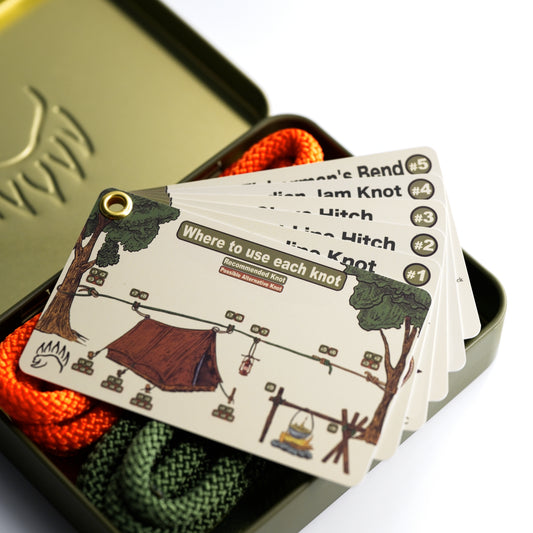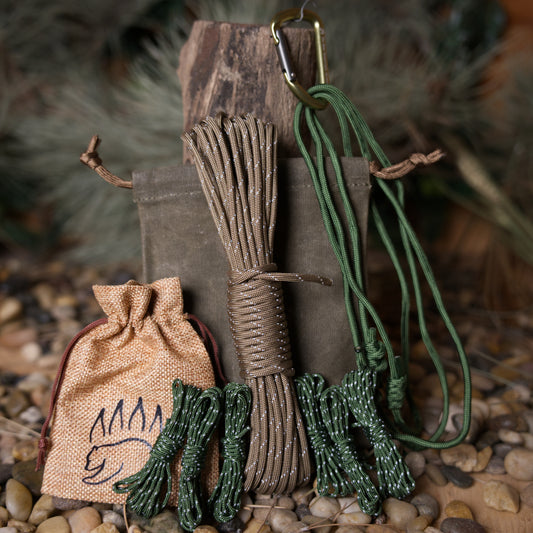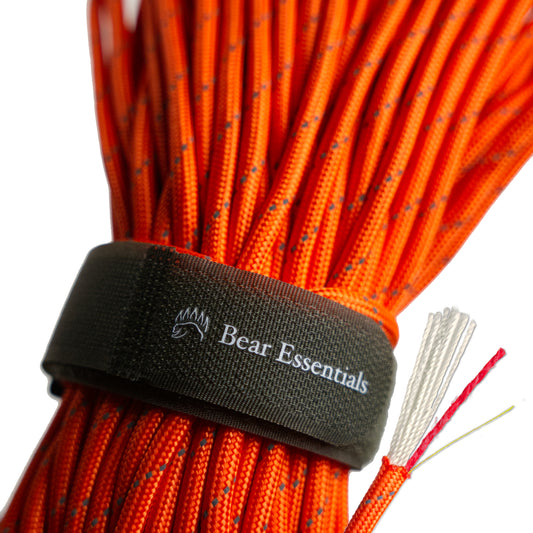How to Tie the Triple Surgeon’s Knot (Bend)
Usage
The Triple Surgeon’s Knot (Bend) is commonly used to join two lines or ropes, particularly in fishing for connecting fishing lines of similar diameter with enhanced security.
Why Learn the Triple Surgeon’s Knot (Bend)?
Its fortified design ensures exceptionally strong line connections. This knot is a reliable choice for anglers and outdoor enthusiasts needing robust joins.
Common Uses
-
Fishing:
- Joins fishing lines for extended length or leader attachment.
- Connects monofilament or fluorocarbon lines with high reliability.
-
Utility:
- Ties ropes for bundling or securing moderate loads.
- Joins cords for temporary setups in workshops or households.
-
Camping:
- Connects ropes for shelter ridgelines or gear repairs.
- Secures lines for sturdy tarp setups.
ABOK Number
(Ashley Book of Knots)
Other Names
Category
|
Notable Features
- Superior strength: Three wraps provide maximum security for moderate to heavy loads.
- Simple to tie: Builds on the easy overhand knot structure, quick to learn.
- Versatile use: Ideal for fishing, camping, and utility line-joining tasks.
- Reliable grip: Holds securely for lines of similar diameter.
- Effective in wet conditions: Fast to tie, even in low-light or slippery environments.
Variations
(See "Similar Knots" section for comparisons with Double and Single Surgeon’s Knots.)
Similar Knots
Double Fisherman’s Bend vs. Triple Surgeon’s Knot (Bend)
- Pros: Extremely secure for permanent joins, popular in climbing.
- Cons: Harder to untie and bulkier than the Triple Surgeon’s Knot.
Blood Knot vs. Triple Surgeon’s Knot (Bend)
- Pros: Sleeker profile, ideal for fine fishing line connections.
- Cons: More complex to tie and less effective with mismatched line diameters.
History
The Triple Surgeon’s Knot (Bend), a variation of the Surgeon’s Knot, likely originated in medical contexts where surgeons used multiple wraps to tie sutures securely. Referenced in The Ashley Book of Knots (#1209) as part of the Surgeon’s Knot family, its adaptation for fishing and utility tasks highlights its simplicity and strength. Its popularity in angling stems from its ease of tying in wet or slippery conditions, making it a staple for joining lines.
Security Level
The Triple Surgeon’s Knot (Bend) is highly reliable for joining lines of similar diameter, particularly in fishing, with its three wraps providing superior strength over the Double Surgeon’s Knot. It holds exceptionally well under moderate to heavy tension but may jam tightly or slip with significantly mismatched lines. For critical applications, test the knot thoroughly and trim tag ends carefully to prevent unraveling.
Downsides
- Bulky profile: Larger than sleeker knots like the Blood Knot, less ideal for fine lines.
- Jamming risk: Difficult to untie after heavy loads, especially with thin or slick lines.
Structure
- Lay the ends of the two lines parallel, overlapping by several inches.
- Treat both lines as one and tie a triple overhand knot by looping the ends around the standing parts three times.
- Pass the ends through the loop again for a third wrap, creating a total of six wraps (three per side).
- Pull all four ends (two standing parts and two working ends) to tighten the knot evenly.
- Trim the tag ends close to the knot for a neat finish, ensuring no slippage.
Pro Tip: Wet the knot before tightening to reduce friction and ensure a snug fit.
FAQ
Is the Triple Surgeon’s Knot (Bend) strong enough for heavy loads?
Yes, it’s reliable for moderate to heavy loads in fishing or utility tasks, but test with heavy loads first.
What lines work best for the Triple Surgeon’s Knot (Bend)?
Monofilament, fluorocarbon, or similar-diameter ropes ensure optimal strength and stability.
How does the Triple Surgeon’s Knot (Bend) compare to the Double Surgeon’s Knot?
It’s stronger but bulkier and slightly harder to untie.
Can the Triple Surgeon’s Knot (Bend) be used for climbing?
No, it’s not suitable for climbing or life-support applications; use climbing-specific knots instead.
Why choose the Triple Surgeon’s Knot (Bend) over the Blood Knot?
It’s easier to tie and more forgiving with line mismatches, though less streamlined.
Important Notes on Safety
Common failure points include mismatched line diameters or improper tightening, which can cause slipping. Always verify the knot is used for appropriate tasks and correctly tied.
Inspect lines for wear or damage before tying.
Wet the knot before tightening to reduce friction and ensure a secure fit.
Practice tying in low-risk settings to ensure proficiency.









